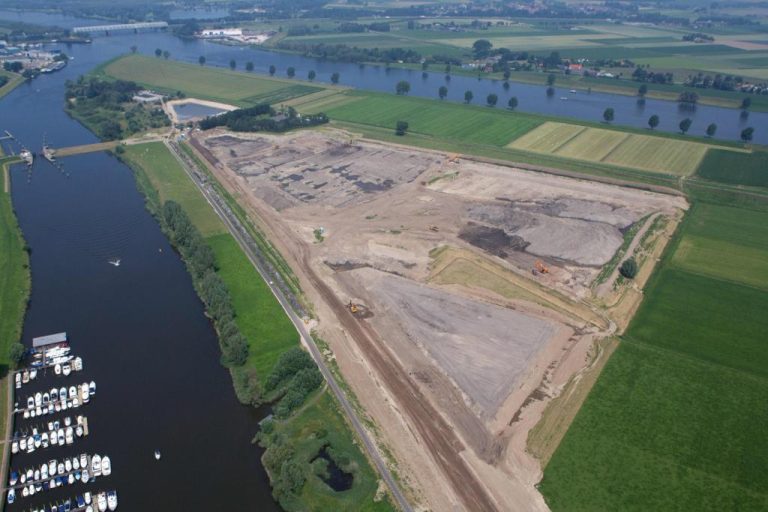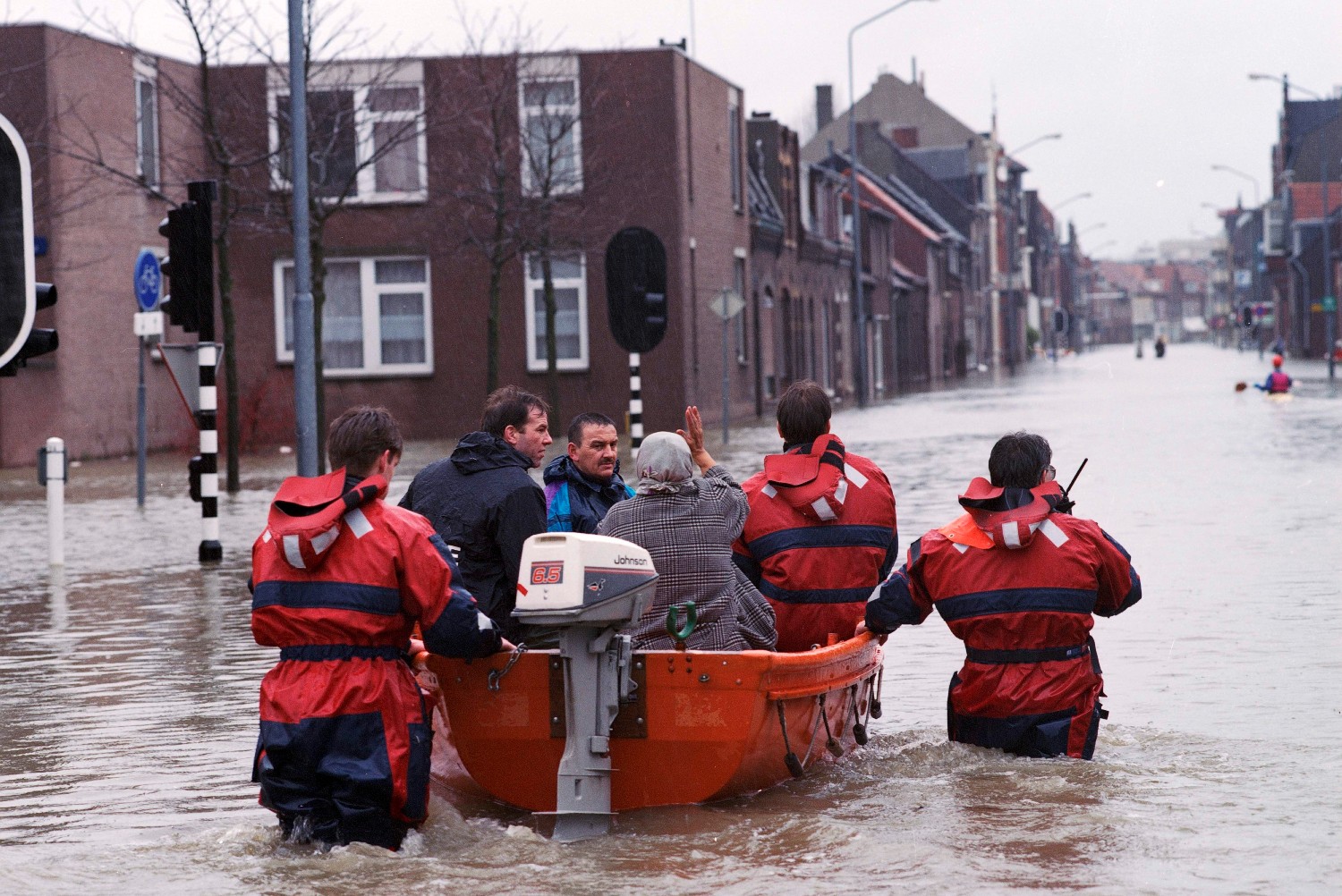Thanks to the ‘Room for the Rivers’ programme, some houses are worth 15% more than with regular dyke increases, TPM researchers have found.
Rescue workers evacuate Venlo residents on 29 January 1995. (Photo: © Rijkswaterstaat / Henri Cormont)
January was a wet month. It was the same some 30 years ago. Persistent rain caused the water in the Meuse river to surge to unprecedented levels in December 1993. The river overflowed its banks in several places and streets flooded in the villages of Borgharen and Itteren. An evacuation was launched to bring 12,000 people to safety. Images of cars with sofas on the roof appeared on television.
Until then, when the Dutch thought of floods, they thought about the large inundation of Zeeland in 1953 with its 1,836 casualties. So the Delta Works mainly focused on coastal defence. But suddenly the water came ‘from behind’. And in 1995, two years after the Meuse flooded, it hit again. Something had to be done.
Suddenly, the water came ‘from behind’
That became the ‘Room for the Rivers’ programme. Floodplains were widened, waterways deepened, gullies dug and water storage facilities established. The ecological hydraulic engineering work started in various locations along the rivers in the early 2000s and is still ongoing. An investment of EUR 2.3 billion has improved the safety and living environment of four million people, Rijkswaterstaat reported.
Housing market
A recent publication by Ecological Economist Prof. Tatiana Filatova (Faculty of Technology, Policy and Management, TPM), PhD student Asli Mutlu (TPM) and co-author Dr Debraj Roy (University of Amsterdam) shows what this investment in safety and nature has brought residents. They compared the house prices in more than 68,000 purchase documents in the Meuse Valley over a 30 year period (1990 – 2020).
That floods negatively affect house prices will not surprise anyone, and the researchers saw the effect of floods in housing transactions. Houses in the flood zone even before the 1993 flood were on average 5.6% lower than comparable houses outside the zone. After both floods, that price gap increased to 10.9%.
“That drop in value is usually temporary,” Tatiana Filatova says. “After a decade or so, the difference disappears. We saw that in the transfers here and a US study showed the same thing there. People forget about the floods, unless there are repeat inundations. That could drop the value permanently.”

The Overdiepse Polder is one of more than 30 places where the national Room for the Rivers programme gives flood protection. This is done by lowering the existing dyke on the Bergsche Maas allowing the river water to flow through the polder at high tide. (Photo: © Rijkswaterstaat | Aeroview Rotterdam)
Increasing value
But natural flood protection measures, as applied in Room for the Rivers, have the opposite effect on house prices, Filatova and colleagues found. They saw increases in value of up to 15%. Remarkably, this did not apply to a more northern part of the Meuse where the river is sandwiched between hard dykes.
“Houses near the river have the advantage of easy access to water facilities,” Filatova explains. “Think of river views, water recreation, or a walk along the green bank. These houses are less at risk of flooding and there is space for biodiversity, which is a plus. Combining these three benefits, we conclude that nature-based solutions improve house prices near the river.”
So does investment in green hydraulic engineering pay off in the form of increased property values in the area? “We did not compare the costs with the increase in value because we do not know how big the investments were in that area,” says Filatova. “We only mapped the benefits for households. For municipalities, it could be an argument for choosing green solutions.”
Excavating, deepening, relocating and lowering. Room for the River offers a palette of options for ecological hydraulic engineering. Video: @ruimtevoorderivier
Do you have a question or comment about this article?
j.w.wassink@tudelft.nl


Comments are closed.